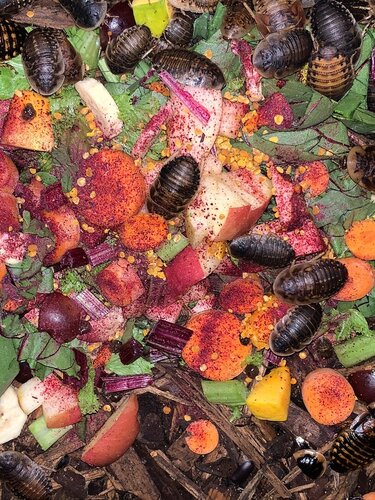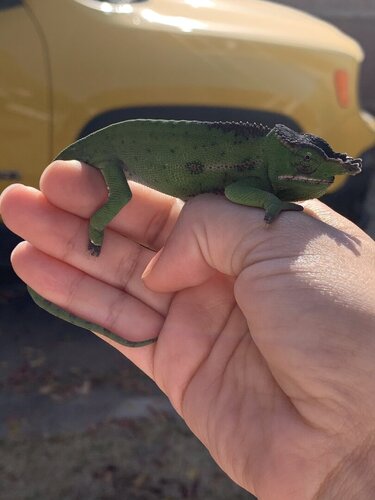Tihshho
Established Member
As long as we are providing the correct UVB, is there any reason why we cannot get rid of the dusting regime and focus more on getting feeder prey gutloaded?
I'm currently working on a new colony of Dubia roaches and superworms and am feeding them a mix of foods (wet and dry) in hopes to be able to get them up to par with what's needed for a Cham. Ideally, I'd like to get larger prey items (Dubias, superworms, and crickets) full of nutrients and get away from calcium suppliments. Foods that I'm including are as follows:
Dubias:
- Josh's Frogs Dubia Rations (dry)
- Mandarin Oranges (fresh)
- Grapefruit (fresh)
- Grapes (fresh)
- Kale (fresh)
- Water Crystals saturated with sugar free gatorade (damp)
- Fish Flake Food (dry - I get whatever is on sale and mix the flake fish food with the Dubia rations)
Superworms:
- Dehydrated Mandarin (semi dry)
- Grapes (fresh)
- Kale (fresh)
- Water Crystals saturated with sugar free gatorade (damp)
- Fish Flake Food (dry - I get whatever is on sale and mix the flake fish food with the Dubia rations)
I've even considered looking into a reasonable liquid calcium supplement to dilute and mix into my water crystals to hydrate them as sources for calcium. But since I have yet to stray from dusting, I have not gone this route.
I'm currently working on a new colony of Dubia roaches and superworms and am feeding them a mix of foods (wet and dry) in hopes to be able to get them up to par with what's needed for a Cham. Ideally, I'd like to get larger prey items (Dubias, superworms, and crickets) full of nutrients and get away from calcium suppliments. Foods that I'm including are as follows:
Dubias:
- Josh's Frogs Dubia Rations (dry)
- Mandarin Oranges (fresh)
- Grapefruit (fresh)
- Grapes (fresh)
- Kale (fresh)
- Water Crystals saturated with sugar free gatorade (damp)
- Fish Flake Food (dry - I get whatever is on sale and mix the flake fish food with the Dubia rations)
Superworms:
- Dehydrated Mandarin (semi dry)
- Grapes (fresh)
- Kale (fresh)
- Water Crystals saturated with sugar free gatorade (damp)
- Fish Flake Food (dry - I get whatever is on sale and mix the flake fish food with the Dubia rations)
I've even considered looking into a reasonable liquid calcium supplement to dilute and mix into my water crystals to hydrate them as sources for calcium. But since I have yet to stray from dusting, I have not gone this route.







